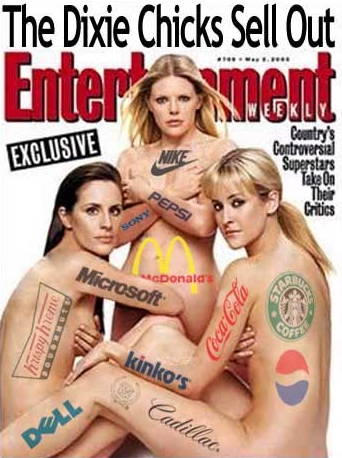I like this “Viral Video: Cashing In or Selling Out” by Jennifer Hollett (Canadian Globe & Mail), and not just because I’m featured in it. It’s actually a well-balanced view of the issues surrounding paid sponsorship and product placement.
 As you may know, there are two different ways to make money via online video. You can share in the percent of ad proceeds based on the publisher (Revver, Metacafe, and now YouTube’s Partner Program). This is easier, but low margin. And you’re at the mercy of the publisher. Currently it would appear YouTube is selling fewer InVideo ads associated with amateur content, and I’m seeing more Google Adsense copy ads or display only. InVideo ads are far, far more profitable to YouTube and creators — selling at about $20 per thousand impressions. Advertisers get much more exposure, since the ads peek up at the bottom and are interactive (a far cry better than banners that we tend to tune out). The second way a creator can profit is by working directly with brands to feature products and services for a fair fee.
As you may know, there are two different ways to make money via online video. You can share in the percent of ad proceeds based on the publisher (Revver, Metacafe, and now YouTube’s Partner Program). This is easier, but low margin. And you’re at the mercy of the publisher. Currently it would appear YouTube is selling fewer InVideo ads associated with amateur content, and I’m seeing more Google Adsense copy ads or display only. InVideo ads are far, far more profitable to YouTube and creators — selling at about $20 per thousand impressions. Advertisers get much more exposure, since the ads peek up at the bottom and are interactive (a far cry better than banners that we tend to tune out). The second way a creator can profit is by working directly with brands to feature products and services for a fair fee.
If you read this blog regularly, you’ll recognize my POV on this article (worth a scan). I satirize “selling out,” but I actually think you can find a balance between helping an advertiser and entertaining. I even contend that promotion need not come at the expense of the entertainment and vice versa. That said, I do respect the opinion of Kalle Lasn, editor in chief of Adbusters magazine and author of Culture Jam. Kalle, according to the piece, feels product placement on YouTube is a sad development. Lasn says there are already between 3,000 – 5,000 marketing messages coming into the average North American brain everyday. “I don’t think we really need 5001,” he says.
The article highlights (oh I hate that word) Brandfame, which helps facilitate the interaction between creators and sponsors. I’ve also met with Placevine, which represents a number of different brands interested in tapping creators. This article references a video I made called “Viral Video Broker,” where I spoofed this industry almost two years ago exactly. (Another one of those videos I wish I had shot with a better camera, but at least I was somewhat ahead of my time… the voices were, of course, people in my offices at J&J not real weblebrities).

Watch for five trends in this area in 2008:
- Creators are going to cross the line by pushing the advertising too hard, and alienating their viewers. It will feel right for them and their sponsors, but ultimately make for a jaded bunch of viewers.
- Brandfame and Placevine are the signs of an emerging cottage industry that will become more vital than the labor intensive machines helping broker product placement in television and films. Online video will give brands more inventory (it’s not called the “short tail” folks), access to niche audiences, and — here’s why the legacy firms will struggle — easier scalability. You’d better make it easy for brands and creators, and take a fair portion but not excessive. Product sponsorship is the only way many brands will penetrate the vital medium of online video, because it’s a fairly ad resistant one. In the “lean forward” generation of online-video, we’ll only watch your advertising if it’s interesting or if you force us. I’d content the sustainability of the latter is weak, and you’d have trouble arguing otherwise. Enter TiVo bloink sound, or the sick delight we take shutting a browser window that “serves” a pre-roll advertising with all the tact of a bad-breathed vacuum cleaner salesman. As David Spade said as a flight attendant on SNL, “Buh bye. “
- The online-video sites will struggle in this area. Currently mama Google doesn’t profit if I cut my own deals with Mentos (except when Mentos flighted my video as a 30-second ad). But it’s not an area of high concern since YouTube needs to focus on scalable revenue. What happens, however, if creators join forces and agree to sell prerolls embedded in the video file… a Toyota ad pops up gently in the intros or before the “Next New Network” bumper at the end of a clip? Does YouTube take issue with this advertising that they facilitate but don’t profit on? Or is it analogous to a producer selling his show, but retaining rights to a fixed amount of the ad space (I’ve heard Ryan Seacrest does this with his show).
- There will be no trend four. Trend four is often wrong, which itself is a growing trend.
- The backlash associated with hidden sponsorship is far from over. I wish there was a law that required film makers to disclose any paid advertisers, even though I know much of the “product placement” is offered free by directors. Federal Express, for instance, does not often pay to have its boxes appear in a film. The directors want the film to feel authentic, and seek permission not pay from FedEx to avoid needing to distract viewers with a Garbagepatch Kids-like bastardization of FedEx (FoodEx). In the end, however, I feel like the video creator owes me, as the viewer, disclosure. If you’re getting paid to hold a Mountain Dew, more power to you. Just let me know, so I don’t feel like you’re being sneaky every time your camera pans a mall and I see logos.
